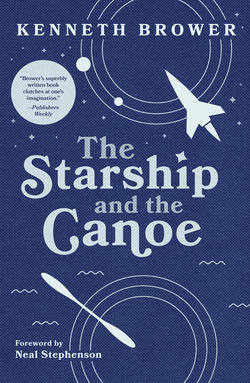Читать книгу The Starship and the Canoe - Kenneth Brower - Страница 18
На сайте Литреса книга снята с продажи.
11 Asteroids
ОглавлениеBetween Mars and Jupiter lies a large gap where one or two planets, perhaps even three, are thought to have orbited. The planets collided, or suffered some other serious accident, for the gap is now filled with fragments. These are the asteroids. There are many thousands of them, of which sixteen hundred have been tracked, each in its private orbit around the sun. They appear through telescopes as starlike points of light, hence the name. Astronomers have learned a lot about asteroids by analyzing their light. Asteroids spin, and the variations in the sunlight they reflect reveal their shapes. The smaller asteroids are irregular, the larger ones spherical. On big asteroids, gravity is respectable—nearly that of the moon. The asteroid Ceres is 480 miles in diameter. Pallas is 300 miles wide, Vesta 240, Juno 120. Icarus is a boulder one mile in diameter. Eros, in outline the size and shape of Manhattan, tumbles through space like a dead cigar.
“There’s very good news from the asteroids,” reports Freeman Dyson. “It appears that a large fraction of them, including the big ones, are actually very rich in H2O. Nobody imagined that. They thought they were just big rocks.”
Water obsesses Freeman. In his mental wanderings across the deserts of space, he worries about it like a Bedouin.
Freeman grows older, and the comets begin to seem farther away to him. At the same time the news from the asteroids improves. Lately he has made a focal adjustment of the imagination, turning his attention from comets to asteroids.
“A comet is a symbol for me of a place where you really get away,” he says. “A comet is way out. That’s where you can go and get lost. And that’s one of the reasons for going into space—if you really want to get lost, so nobody will ever see you again. You’d really be on your own. A bunch of people who’d like to do that, then a comet is probably the place.
“Whereas the asteroids are much closer in. They’re more conventional. It’s easier to get to an asteroid than to Mars, because the gravity is lower and landing is easier. Certainly the asteroids are much more practical, right now. If we start space colonies in, say, the next twenty years, I would put my money on the asteroids.”
Dyson was anticipated in this by Antoine de Saint-Exupéry and his The Little Prince. When the time comes to offer the asteroids to colonists, in fact, the illustrations for the prospectus could be lifted from that book. The drawing Saint-Exupéry called “The Baobabs,” showing a tiny planetoid dwarfed by its baobab trees, looks very much like one of Dyson’s worlds, dwarfed by its hundred-mile-high, genetically engineered orchard. Saint-Exupéry was, it is true, less optimistic about extraterrestrial agriculture than Dyson. “Now there were some terrible seeds on the planet that was the home of the Little Prince,” he wrote of Asteroid B-612, “and these were the seeds of the baobab. The soil of the planet was infested with them. A baobab is something you will never, never be able to get rid of if you attend to it too late. It spreads over the entire planet. It bores clear through with its roots. And if the planet is too small, and the baobabs are too many, they split it in pieces.” Neither was Saint-Exupéry as optimistic about the ennobling effects of life on the asteroids. In search of answers, his Little Prince visits a number of asteroids, and the inhabitants of each display one or another of the old human flaws.
But these doubts can be edited from the prospectus. Life in the asteroid belt will never be rendered more invitingly than in the drawings of the Little Prince moving his chair several steps westward on B-612 so he can continue to watch the sunset, or cleaning out his volcanoes, or conversing with the rose he keeps under glass at night.
Freeman Dyson and the Little Prince are a lot alike. Freeman has the large solemn eyes and the love for great questions. Freeman has a measure of the same sort of innocence. It is not hard, for me at least, to imagine the physicist in the prince’s cape, wandering between Mars and Jupiter, in the vast gap where the planets crashed. I can see him hopping amongst the debris of that ancient judgment day, looking for the answers, for water, for a home.
